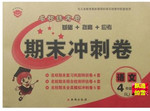
 名校练考卷期末冲刺卷系列答案
名校练考卷期末冲刺卷系列答案科目:高中英语 来源:浙江省期中题 题型:阅读理解
查看答案和解析>>
科目:高中英语 来源:安徽省期中题 题型:阅读理解
Most people know that Marie Curie was the first woman to win the Nobel Prize, and the first
person to win it twice. However, few people know that she was also the mother of a Nobel Prize
winner.
Born in September, 1897, Irene Curie was the first of the Curies' two daughters. Along with nine
other children whose parents were also famous scholars, Irene studied in their own school, and her
mother was one of the teachers. She finished her high school education at the College of S?vign? in
Paris.
Irene entered the University of Paris in 1914 to prepare for a degree in mathematics and physics.
When World War I began, Irene went to help her mother, who was using X-ray facilities (设备) to
help save the lives of wounded soldiers. Irene continued the work by developing X-ray facilities in
military hospitals in France and Belgium. Her services were recognised in the form of a Military's
Medal by the French government.
In 1918, Irene became her mother's assistant at the Curie Institute. In December 1924, Frederic
Joliot joined the Institute, and Irene taught him the techniques required for his work. They soon fell in
love and were married in 1926. Their daughter Helene was born in 1927 and their son Pierre five
years later.
Like her mother, Irene combined family and career. Like her mother, Irene was awarded a Nobel
Prize, along with her husband, in 1935. Unfortunately, also like her mother, she developed leukemia
because of her work with radioactivity(辐射能). Irene Joliot-Curie died from leukemia on March 17,
1956.(www.yygrammar.com)
查看答案和解析>>
科目:高中英语 来源:江西省期中题 题型:阅读理解
查看答案和解析>>
科目:高中英语 来源:四川省期末题 题型:阅读理解
查看答案和解析>>
湖北省互联网违法和不良信息举报平台 | 网上有害信息举报专区 | 电信诈骗举报专区 | 涉历史虚无主义有害信息举报专区 | 涉企侵权举报专区
违法和不良信息举报电话:027-86699610 举报邮箱:58377363@163.com